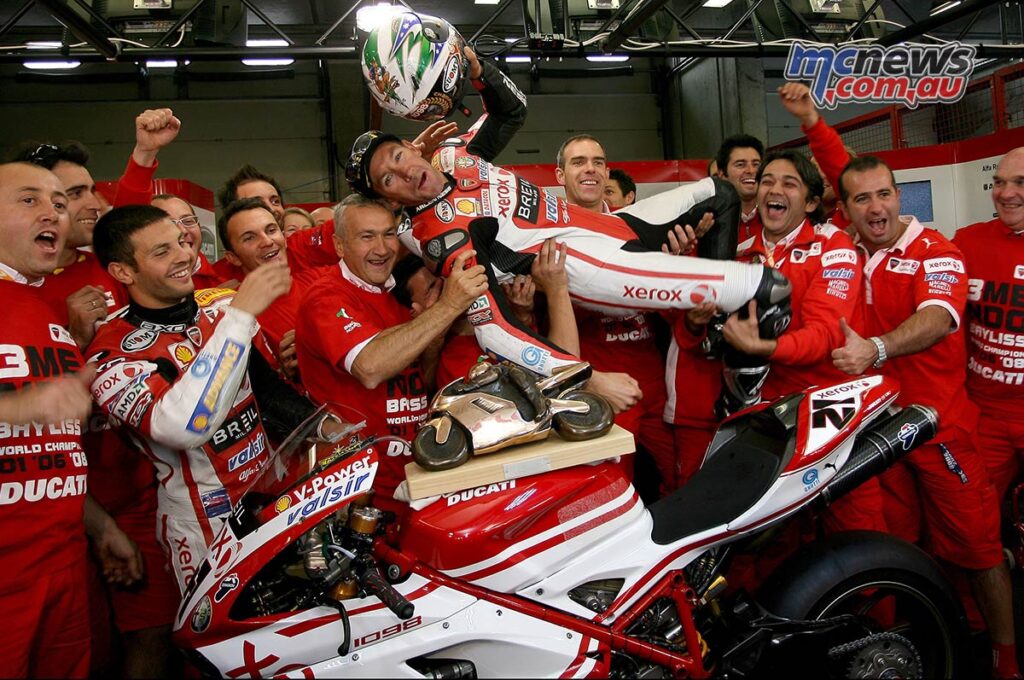Ducati 1098
With Ian Falloon
Considering the 999 won the World Superbike Championships in 2003, 2004 and 2006, and was still a highly competitive racer, its replacement for 2007 was something of a surprise. But while the 999 was extremely good on the track, its style wasn’t universally accepted, and it was still compared unfavourably to the 916 series.
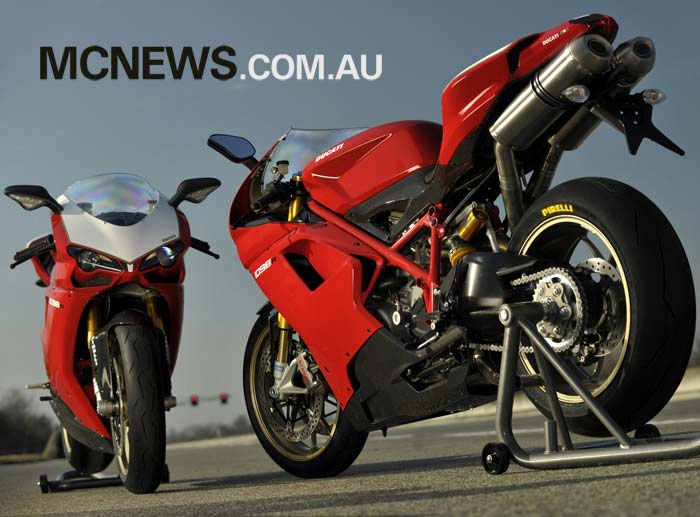
So for 2007 Ducati released the 1098, more powerful and lighter than the 999 and unashamedly drawing styling cues from the earlier 916.
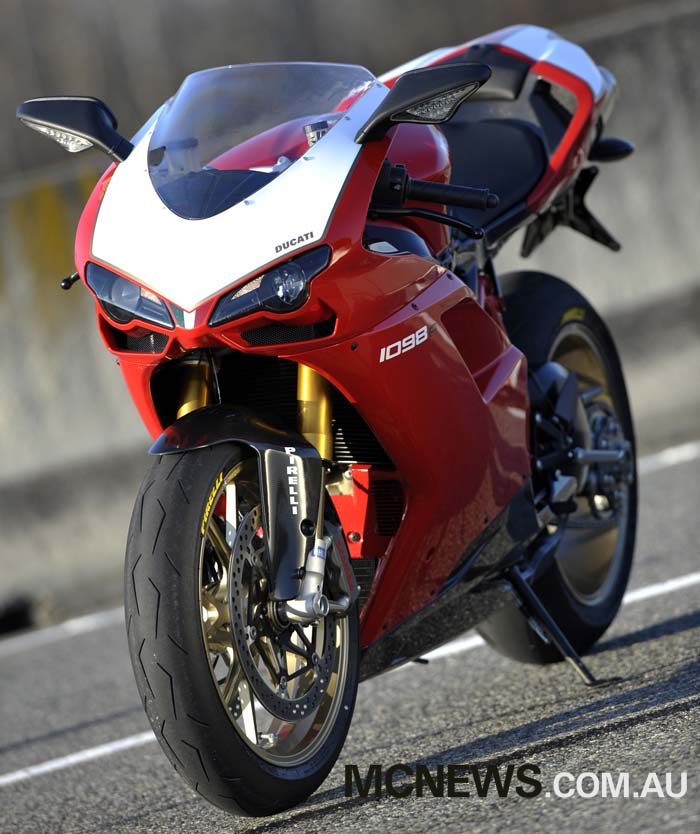
At the heart of the 1098 was an evolutionary Testastretta engine, with a 104 mm bore and 64.7 mm stroke creating the first Ducati twin to displace more than 1000 cc. Weighing 5 kg less than the 999R, the 1098 was also more powerful, producing 160 horsepower at 9750 rpm.
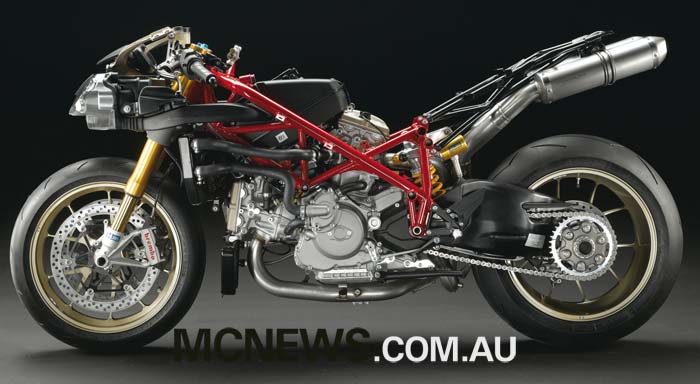
The exhaust system now included a symmetrical 2-1-2 layout with Ducati’s trademark twin under-seat silencers. The trellis frame featured a simplified tube layout larger diameter thinner section main section tubes, increasing rigidity and saving weight. But the most significant chassis update was a return to the 916-style single-sided swingarm.
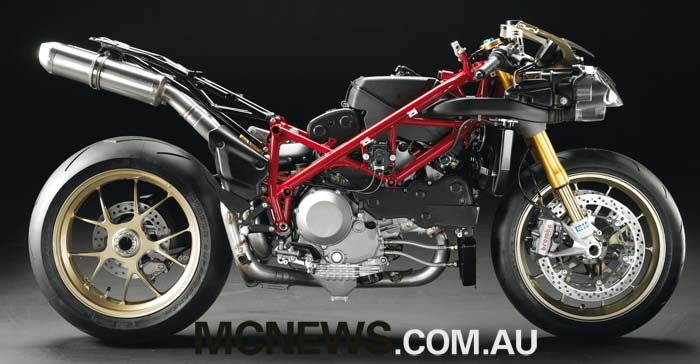
The design of the fairing also saw a return to the 916’s dual headlight arrangement instead of the 999’s stacked type.
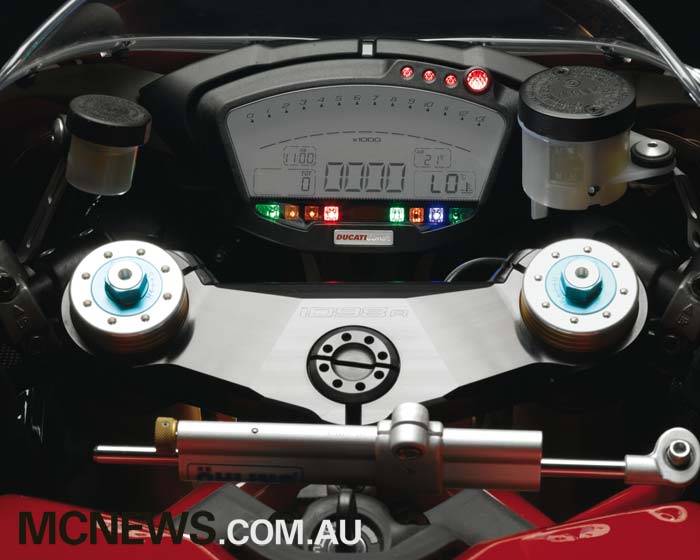
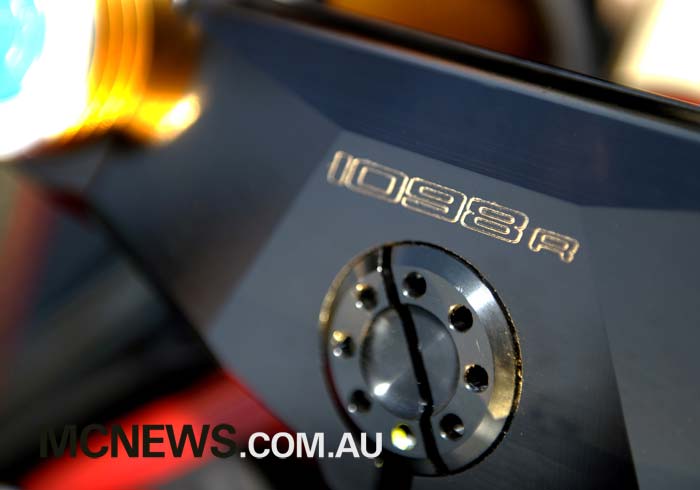
Innovations initiated with the 1098 included Desmosedici-style digital instrumentation, and electronic data acquisition. The overall package was superior to the 999.
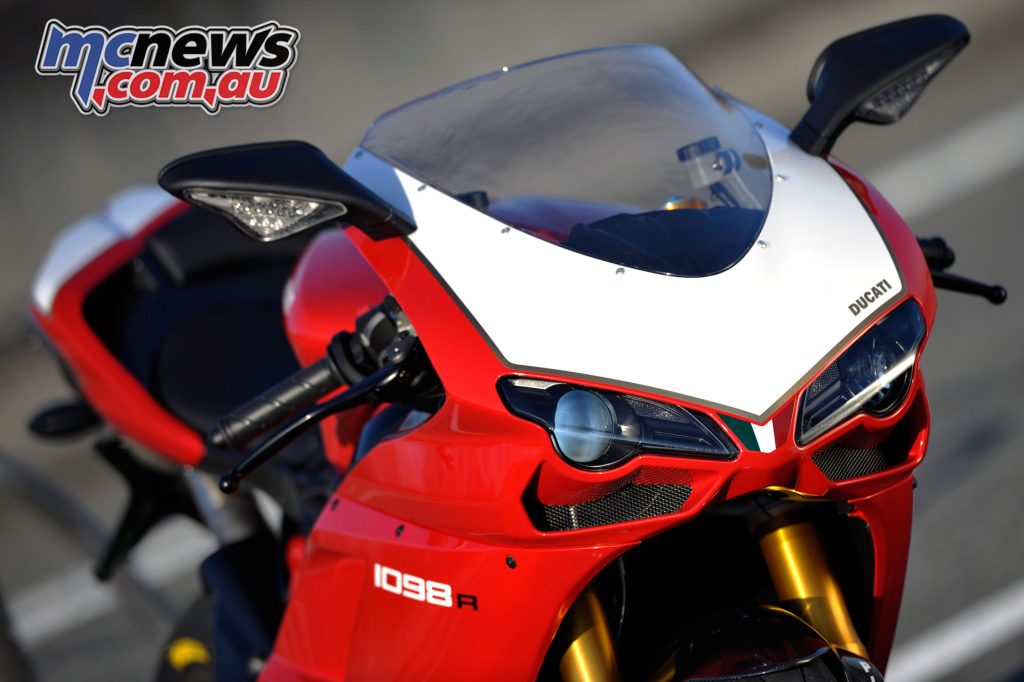
As the 2007 World Superbike regulations still limited twins to 1000 cc the 1098 was ineligible, Ducati still racing the 999 that year. But for 2008 Ducati put pressure on the FIM to increase the capacity limit for twins to 1200 cc, threatening to quit the series if the rules were not changed.
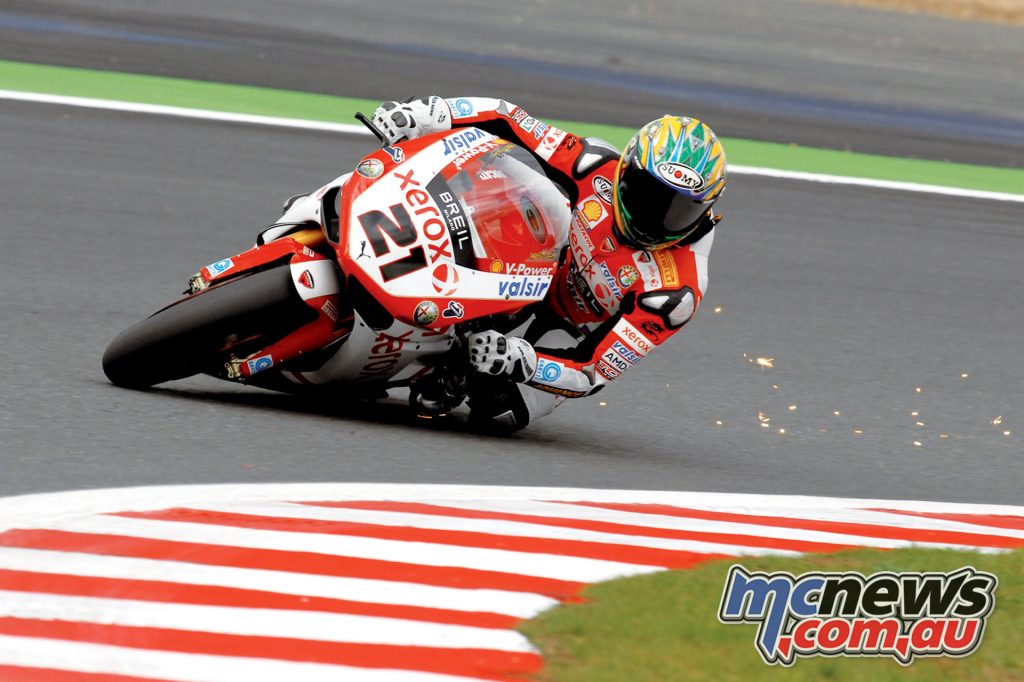
The FIM subsequently changed the rules, although twins were penalised 6 kg over the 1000 cc fours (168 to 162 kg). For the 2008 season Ducati produced a 1198 cc version of the 1098, Troy Bayliss winning 11 races to comfortably take his third World Superbike Championship. Bayliss had won championships on three generations of Ducati Superbikes — the 996R, 999R and 1098 R.
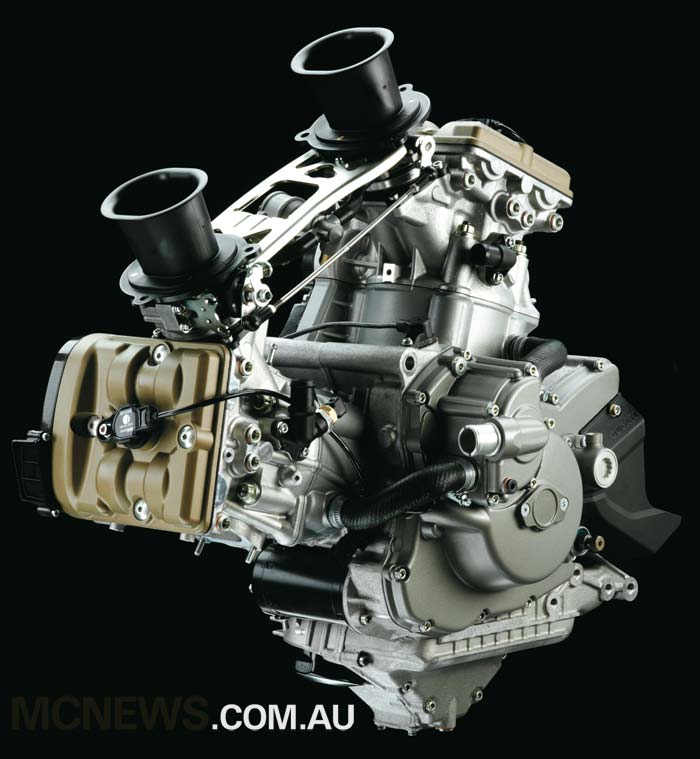
For 2009 the 1198 replaced the 1098, and following Bayliss’ retirement from motorcycle racing, Ducati released the 1098 R Bayliss Limited Edition. As on the World Superbike racer the 1098R Testastretta Evoluzione displaced 1198 cc, through a longer bore and stroke over the 1098. In the tradition of SPS and R-series Ducatis the 1098R was now the most powerful production Ducati twin ever, producing 186 horsepower with the supplied race kit.
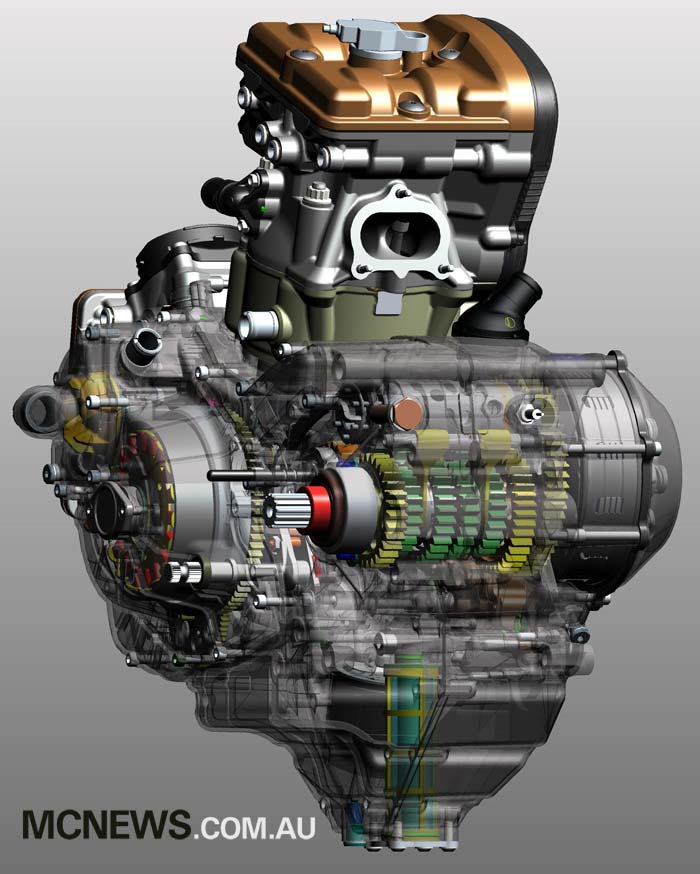
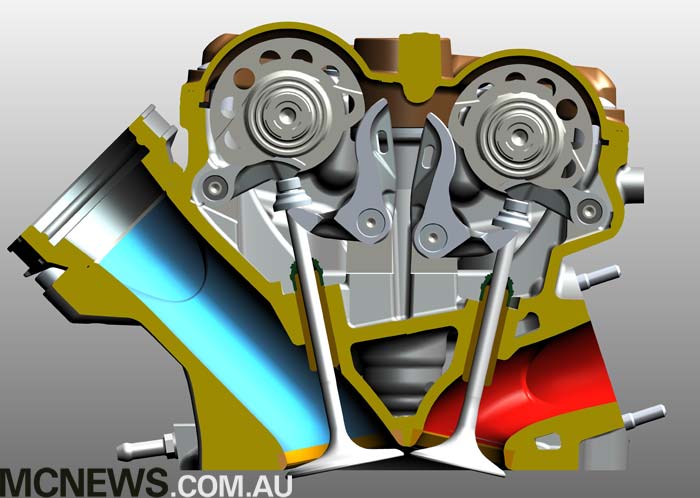
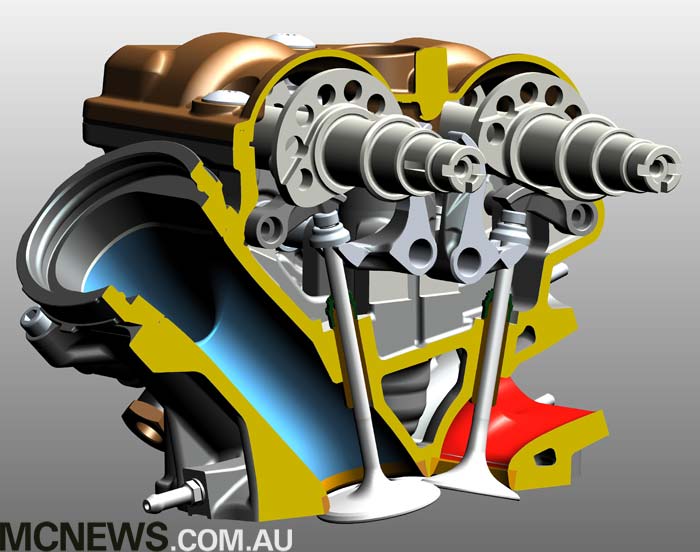
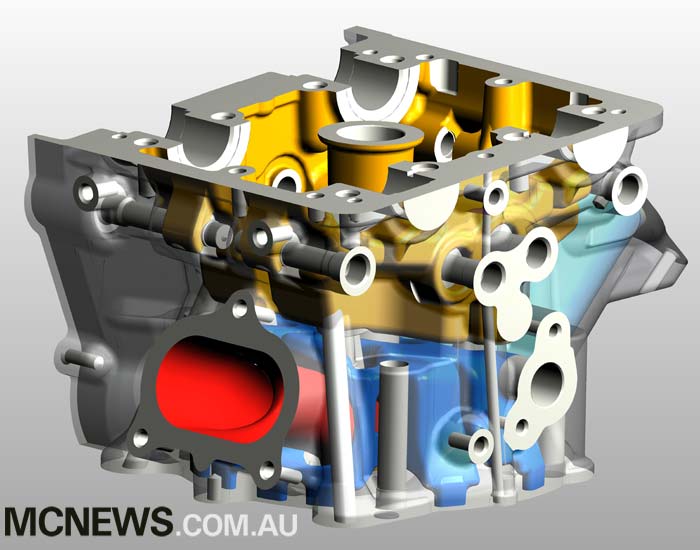
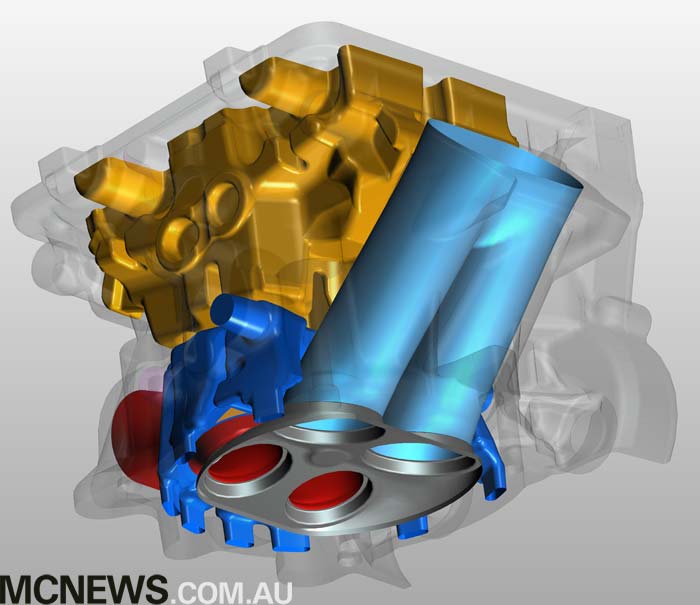
To safely achieve this power the 1098R engine featured many specific components, including sand-cast crankcases, 34 pe rcent lighter titanium con-rods, moulded carbon fibre cam belt covers, and magnesium cam covers.
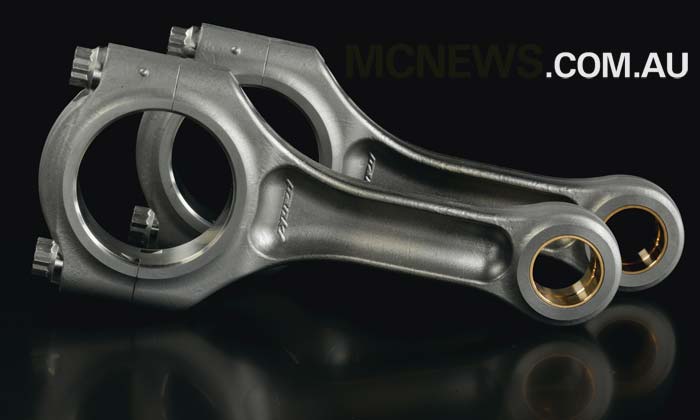
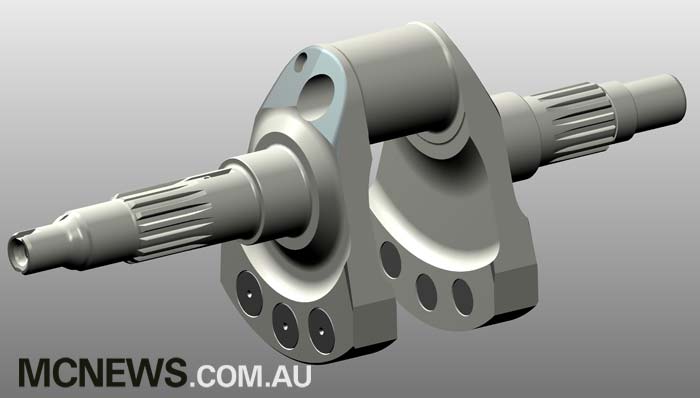 The chrome nitride plated titanium valves were larger (44.3 mm and 36.2 mm) and the high compression 12.8:1 pistons featured the distinctive double-rib under the crown developed for the MotoGP Desmosedici. This provided reduced friction and provided high strength with minimal piston wall surface area.
The chrome nitride plated titanium valves were larger (44.3 mm and 36.2 mm) and the high compression 12.8:1 pistons featured the distinctive double-rib under the crown developed for the MotoGP Desmosedici. This provided reduced friction and provided high strength with minimal piston wall surface area.
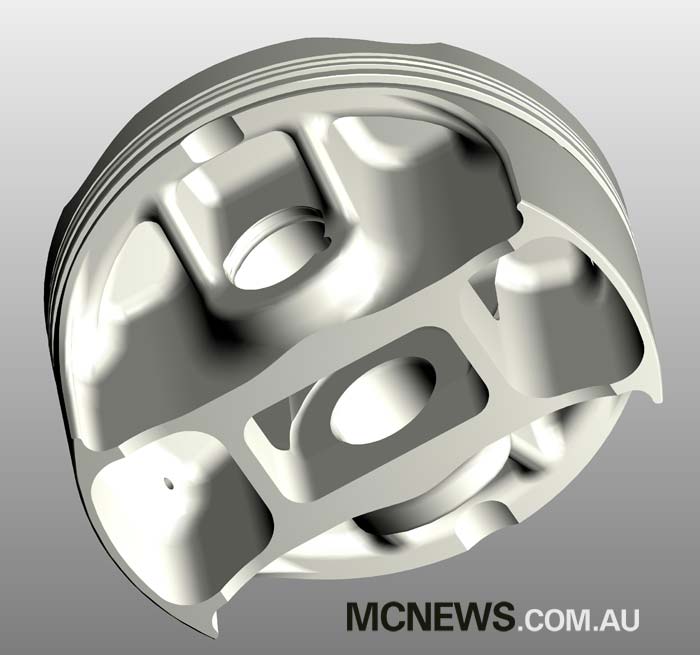
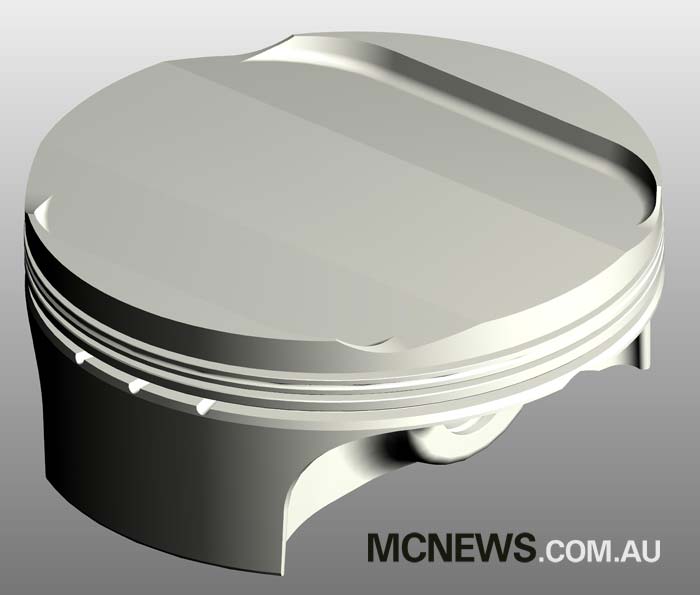
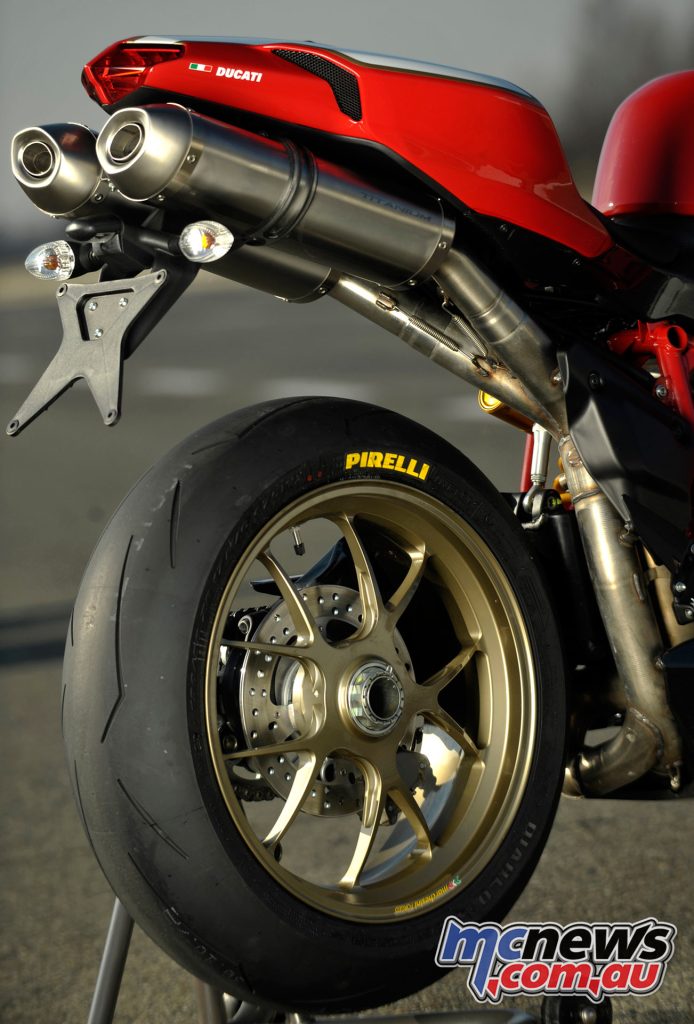
Many other features were inherited from the factory Superbike racer, including the elliptical throttle bodies, equating to a massive e 63.9 mm diameter, and twin injectors per cylinder. The only street Ducati still with twin injectors, the first centrally mounted injector fed fuel through a 4-hole nozzle, while the second offset injector fed through a 12-hole nozzle.
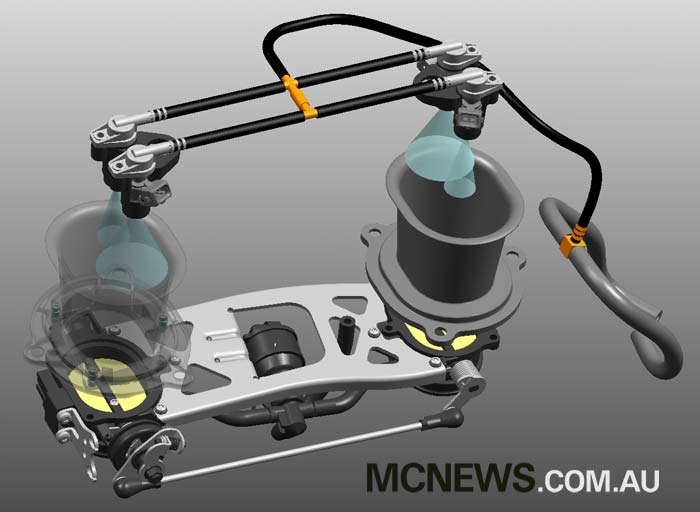
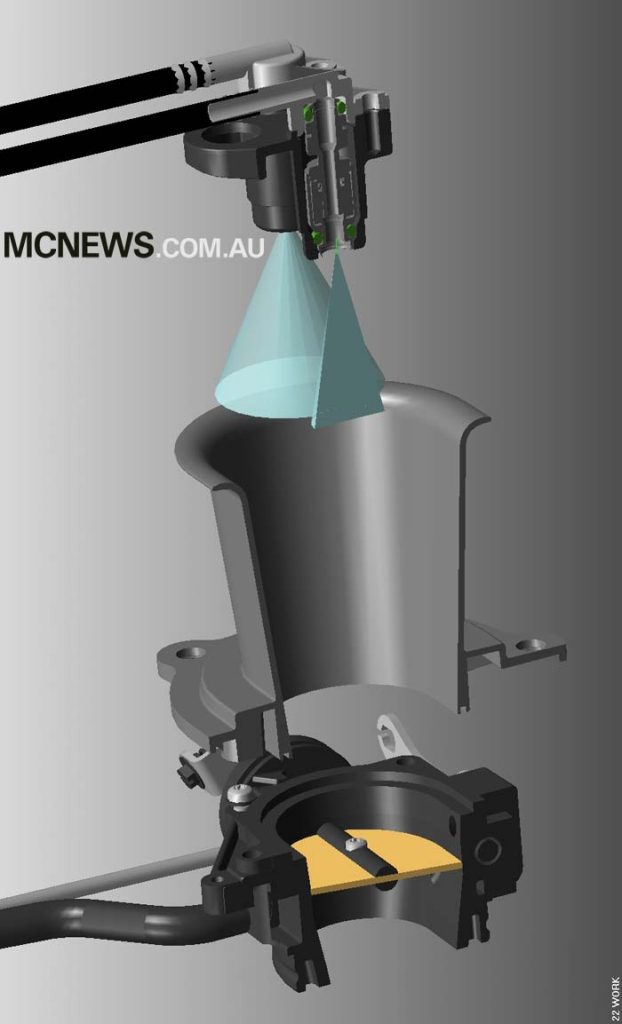
This ensured progressive and fluid power delivery throughout the rev-range with the capacity to provide much more fuel under racing conditions.

The six-speed transmission included a higher ratio sixth gear and all the gears of the same high-strength steel and shot-peened for additional strength as in Ducati Corse race bikes.
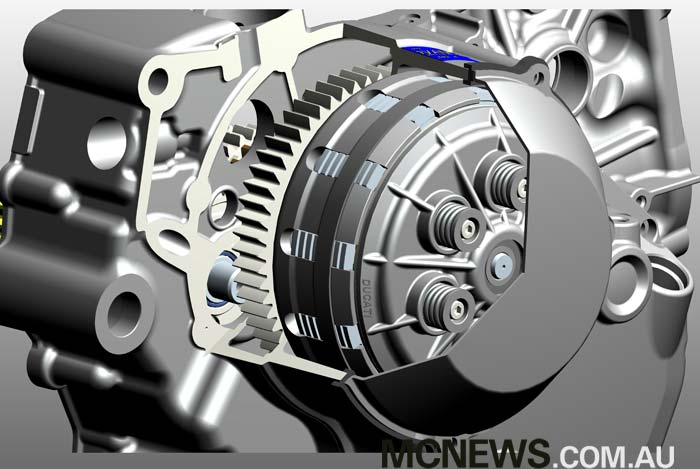
The 1098 R also featured a race type slipper clutch and titanium and stainless steel exhaust system.
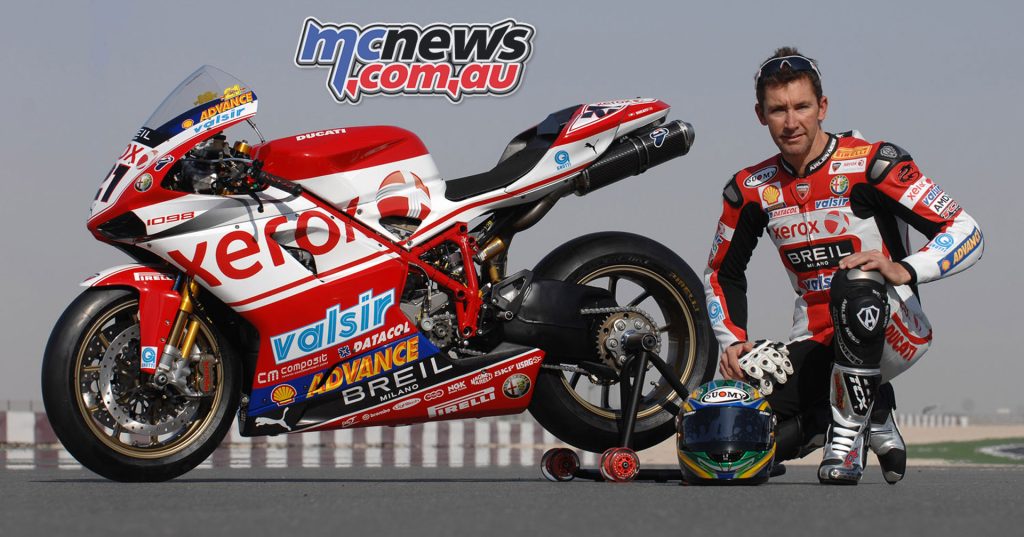
While the frame was the same as the production 1198, as the 1098 R was monoposto only the rear subframe was aluminium, enabling a 50 per cent weight reduction in this area.
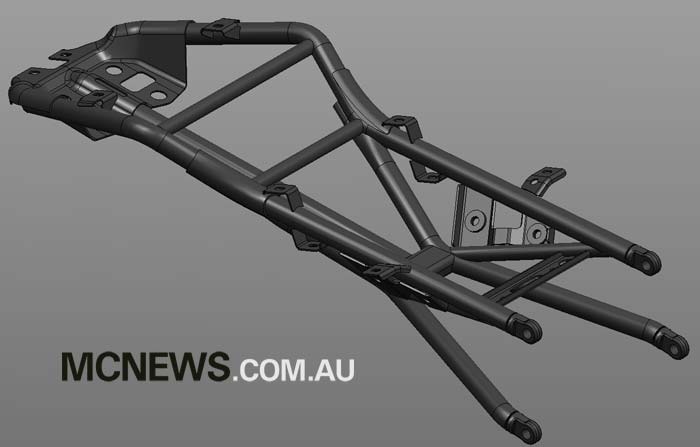
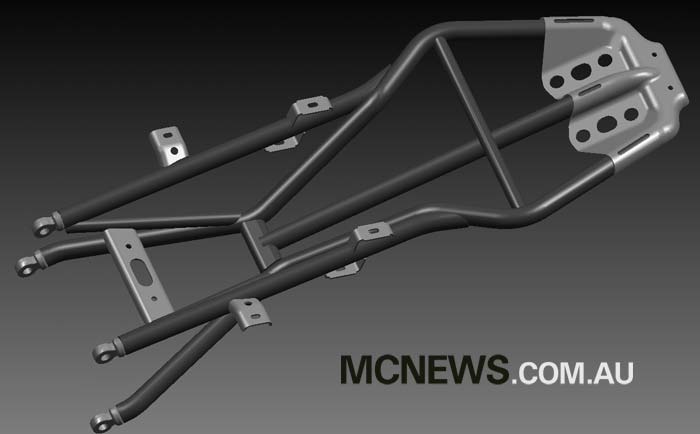
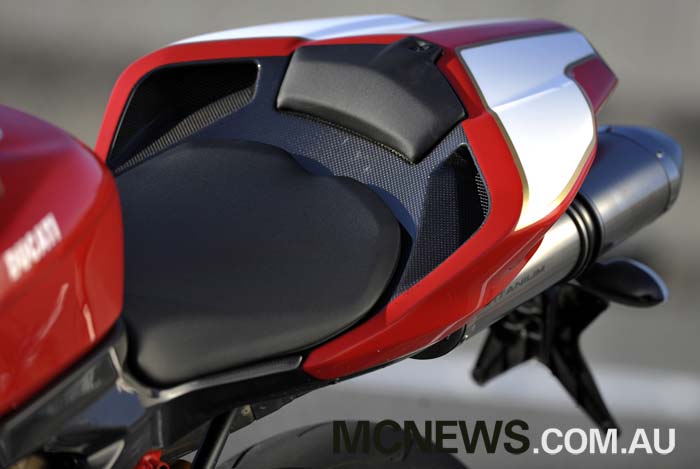
The front 43 mm Öhlins fork and monobloc Brembo brakes were unchanged from the production 1198 S but the rear unit was a racing style Öhlins TTXR.
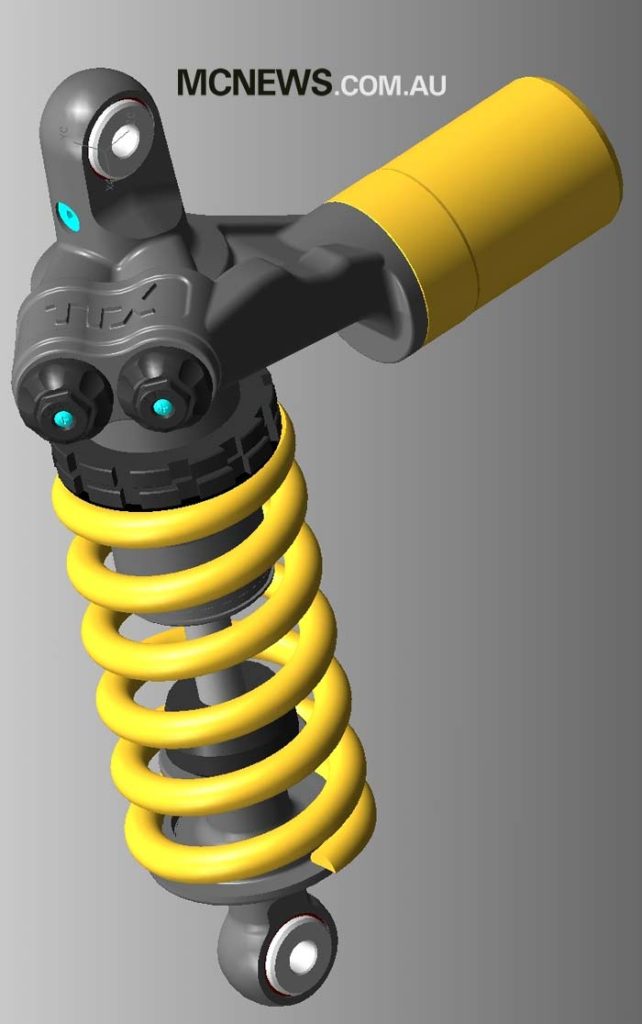
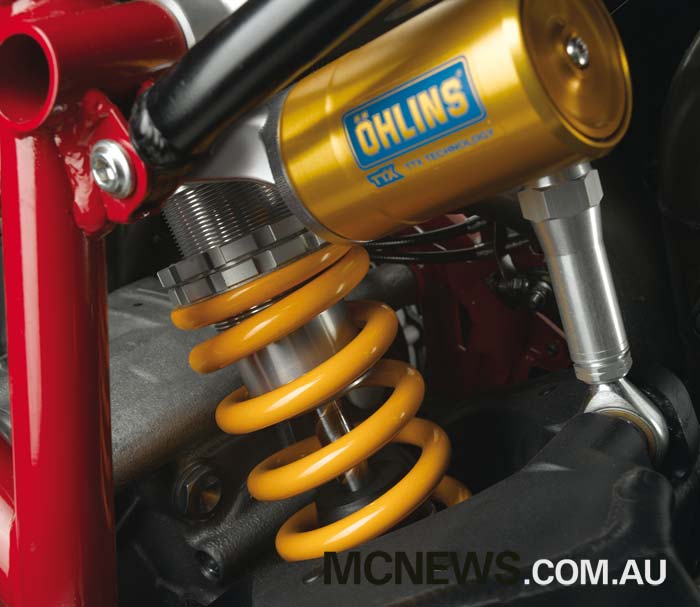
Other 1098 R features included a carbon fibre fairing belly-pan, upper-fairing internal panels, tank lower side panels, seat assembly and front fender. The 1098 R was also the first road bike to feature a racing style traction control system.
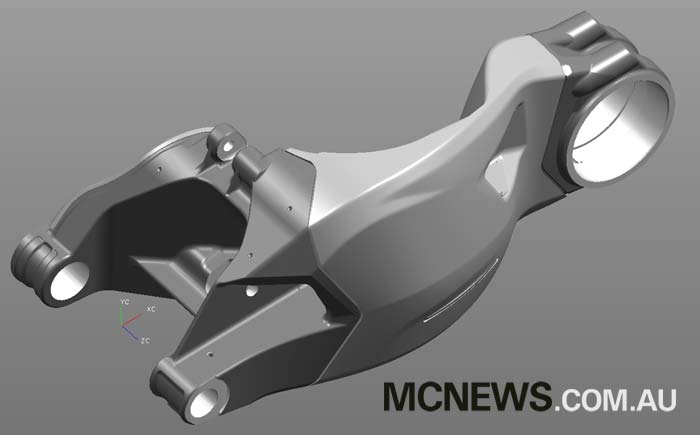
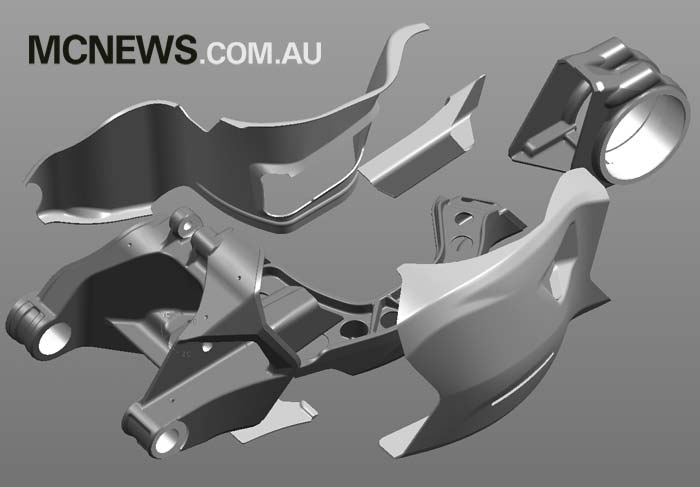
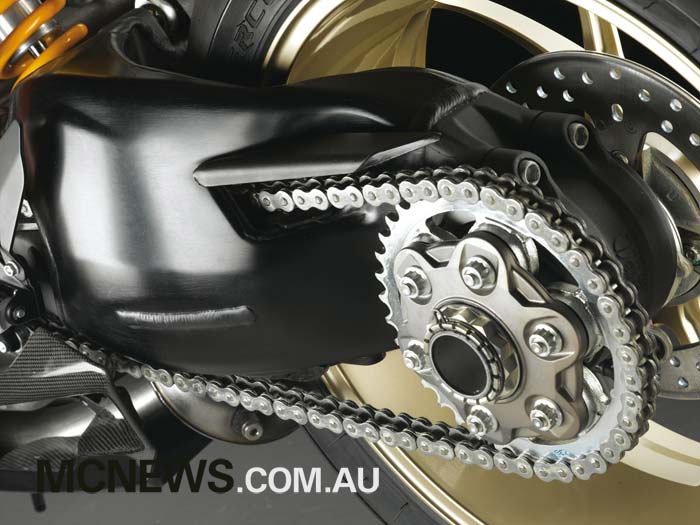
Though the 1098 R Bayliss Limited Edition was identical in specification to the standard 1098 R, it had a special colour scheme designed by Aldo Drudi.
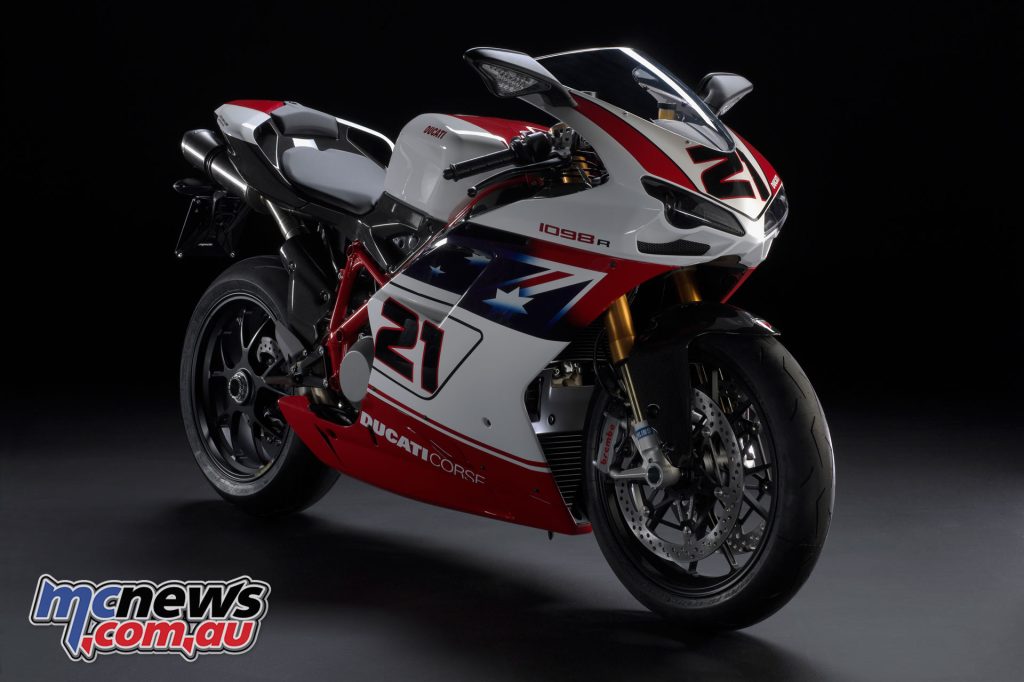
Better known for Valentino Rossi’s helmet designs, Drudi had created the Monster Foggy S4 in 2001 so had a design history with Ducati.
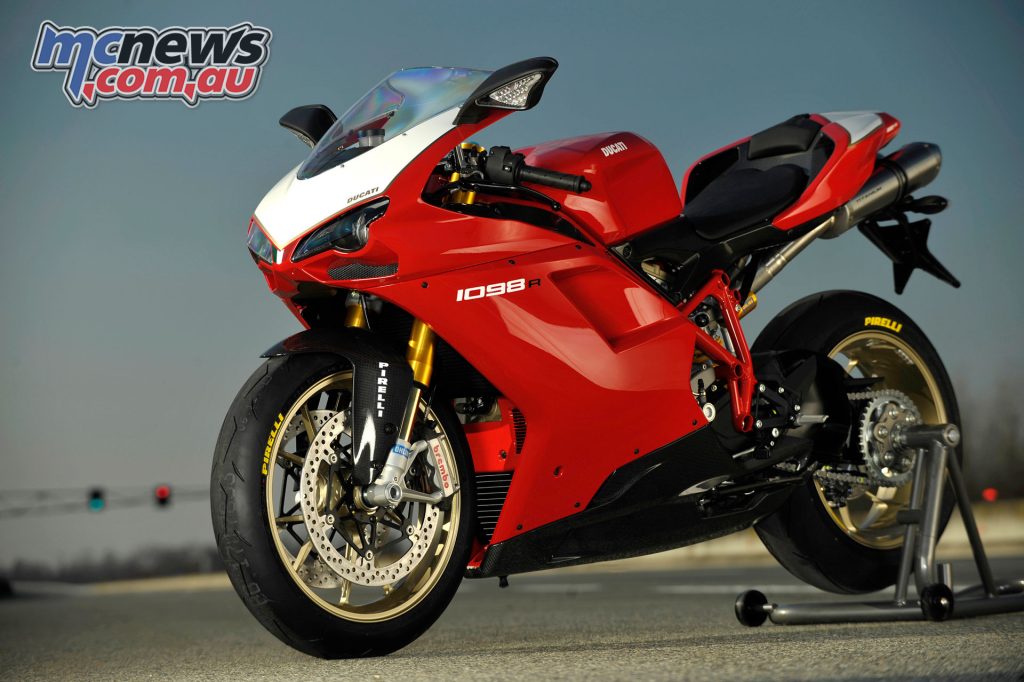
Bayliss’ World Superbike 1098 was painted in identical livery for his final race at Portimão in Portugal, and important components were his trademark #21 and the Australian national flag contrasting with the white and red carbon-fibre bodywork.
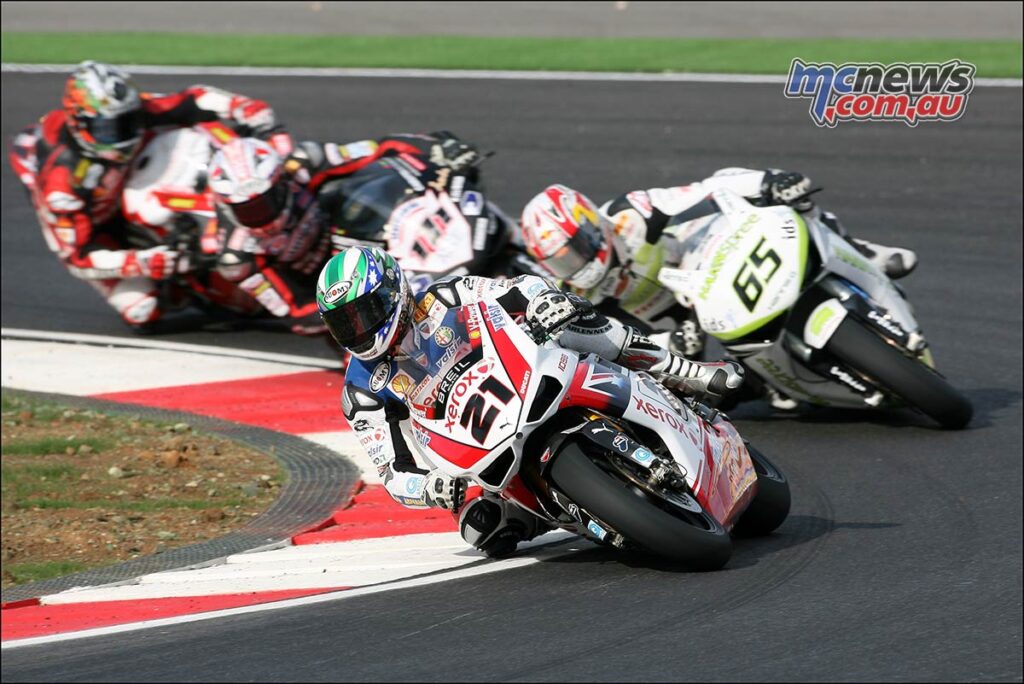
Other features specific to the 1098 R Bayliss were the matte black 5-spoke wheels and carbon fibre exhaust heat shield. Only 500 1098 R Bayliss Limited Editions were produced and they were a fitting tribute to a great champion, the most successful Ducati rider after Carl Fogarty.
Following Troy Bayliss’ retirement the 1098 wasn’t as dominant in the World Superbike Championship. After veteran rider Noriyuki Haga managed a close second on the Xerox 1098 in 2009, Ducati withdrew from direct involvement. Their support passed to Carlos Checa and the satellite Althea Ducati team and Checa rewarded Ducati with a dominating victory in the 2011 World Superbike Championship.
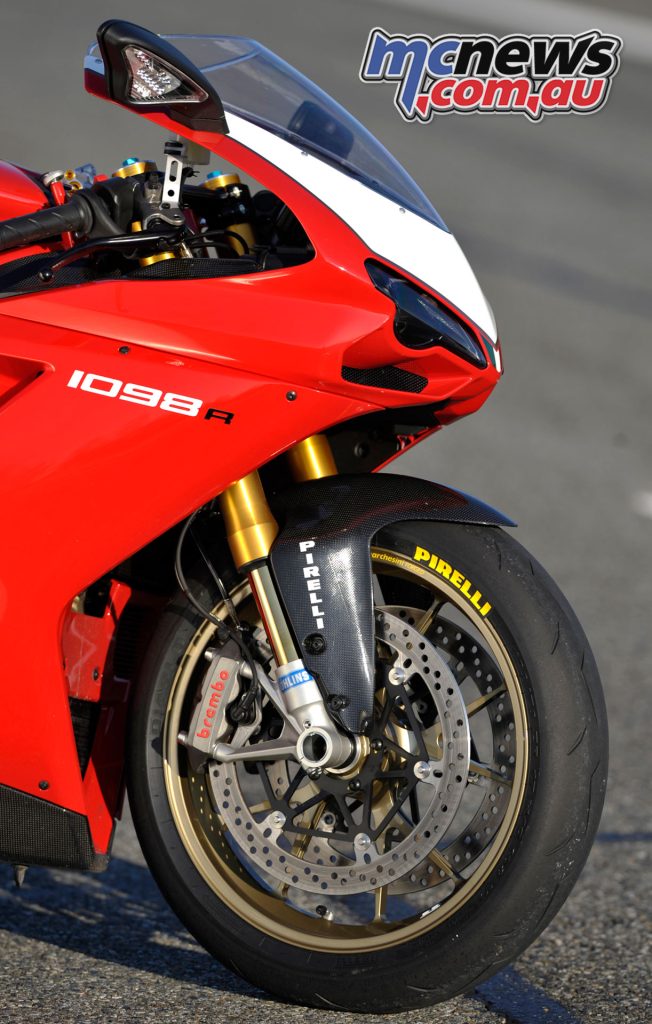
In a stunning season Checa proved nearly unbeatable on a machine deemed obsolete, winning 15 races. As had happened in 2006 with the 999, just as the 1098 was to be replaced, it delivered a surprising result, proving there was more life in the older design than anyone expected.
Even after its replacement by the Panigale in 2012, Checa continued to race the earlier 1098 with moderate success. As the end of the Testastretta line for Superbikes the 1098/1198 also represented the end of an era. These would be the last Superbikes with Pantah-derived engines and a tubular steel frame. They may have only lasted five years but the 1098’s legacy will never be forgotten.
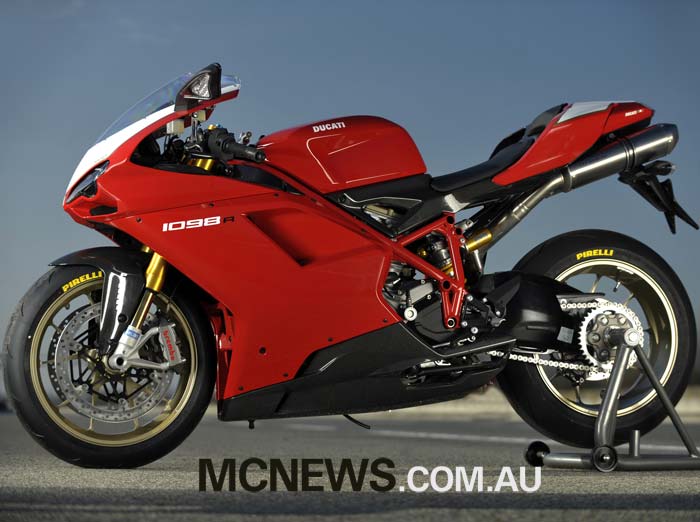
Ducati 1098 R Specifications
| Ducati 1098 R Specifications | |
| Engine | Four stroke, 90 degrees L twin cylinder, DOHC, desmodromic 4 valves per cylinder |
| Capacity | 1198.4 cc / 73.1 cu in |
| Bore x Stroke | 106 x 67.9 mm |
| Cooling System | Liquid cooled |
| Compression Ratio | 12.8:1 |
| Induction | Marelli electronic fuel injection, elliptical throttle bodies |
| Exhaust | Lightweight 2-1-2 system with catalytic converter and lambda probe. Twin stainless steel mufflers |
| Ignition | Digital CDI |
| Starting | Electric |
| Max Power | 132.4 kW / 180 hp @ 9750 rpm – (186hp with included race-kit mufflers and ECU) |
| Max Torque | 134 Nm / 13.7 kg-m / 98.8 lb-ft @ 7750 rpm |
| Clutch | Dry multiplate with hydraulic control slipper clutch |
| Transmission | Six Speed |
| Frame | Tubular steel Trellis frame in ALS 450 |
| Front Suspension | Öhlins 43mm fully adjustable upside-down fork with TiN |
| Front travel | 120 mm |
| Rear Suspension | Progressive linkage with fully adjustable ~Öhlins TTXR monoshock with top-out spring. Aluminium single-sided swingarm. |
| Rear Travel | 127 mm |
| Front Brakes | 2 x 330 mm Discs, 4 piston calipers |
| Rear Brakes | Single 245 mm disc, 2 piston caliper |
| Front Wheel | “GP Replica” 7-spoke in forged light alloy 3.50 x 17 |
| Rear Wheel | “GP Replica” 7-spoke forged light alloy 6.00 x 17 |
| Front Tyre | 120/70 ZR17 |
| Rear Tyre | 190/55 ZR17 |
| Rake | 24.3 degrees – 24.5 degrees |
| Steering angle | 28.5 degrees – 28.5 degrees |
| Dimensions | Length 2100 mm Height 1100 mm |
| Wheelbase | 1430 mm |
| Seat Height | 840 mm |
| Dry Weight | 169 kg |
| Price (New) | $54,995 AUD (plus on roads) in 2008 |
